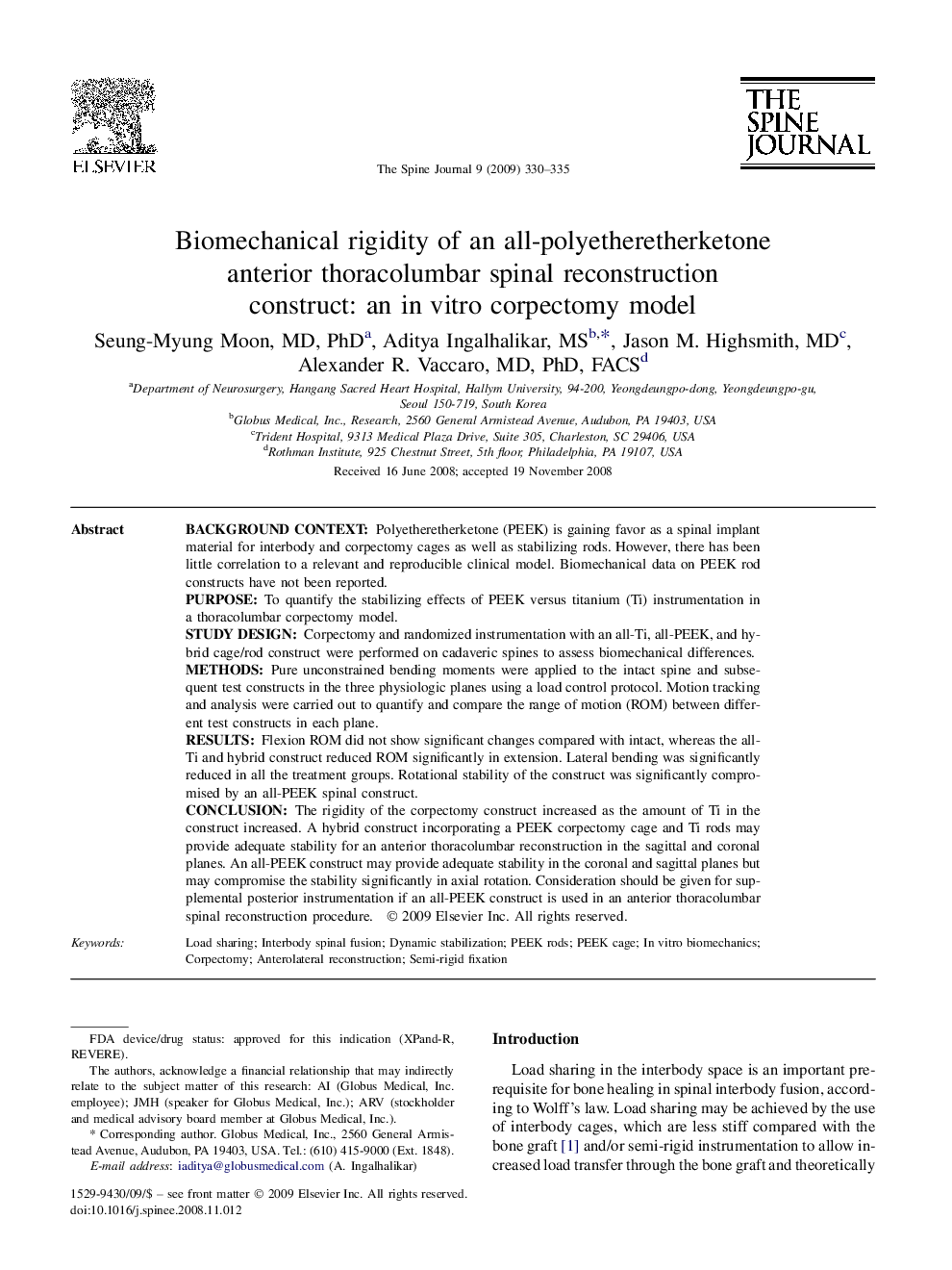| Article ID | Journal | Published Year | Pages | File Type |
|---|---|---|---|---|
| 4099708 | The Spine Journal | 2009 | 6 Pages |
Background contextPolyetheretherketone (PEEK) is gaining favor as a spinal implant material for interbody and corpectomy cages as well as stabilizing rods. However, there has been little correlation to a relevant and reproducible clinical model. Biomechanical data on PEEK rod constructs have not been reported.PurposeTo quantify the stabilizing effects of PEEK versus titanium (Ti) instrumentation in a thoracolumbar corpectomy model.Study designCorpectomy and randomized instrumentation with an all-Ti, all-PEEK, and hybrid cage/rod construct were performed on cadaveric spines to assess biomechanical differences.MethodsPure unconstrained bending moments were applied to the intact spine and subsequent test constructs in the three physiologic planes using a load control protocol. Motion tracking and analysis were carried out to quantify and compare the range of motion (ROM) between different test constructs in each plane.ResultsFlexion ROM did not show significant changes compared with intact, whereas the all-Ti and hybrid construct reduced ROM significantly in extension. Lateral bending was significantly reduced in all the treatment groups. Rotational stability of the construct was significantly compromised by an all-PEEK spinal construct.ConclusionThe rigidity of the corpectomy construct increased as the amount of Ti in the construct increased. A hybrid construct incorporating a PEEK corpectomy cage and Ti rods may provide adequate stability for an anterior thoracolumbar reconstruction in the sagittal and coronal planes. An all-PEEK construct may provide adequate stability in the coronal and sagittal planes but may compromise the stability significantly in axial rotation. Consideration should be given for supplemental posterior instrumentation if an all-PEEK construct is used in an anterior thoracolumbar spinal reconstruction procedure.
